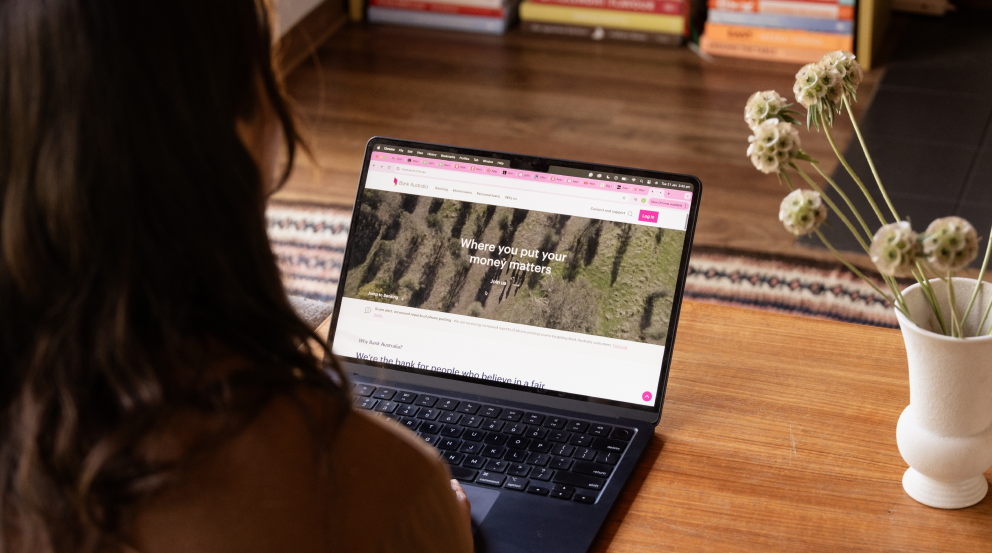Want to know how to save up for the right amount for your needs? When you’re saving up for a deposit, it pays to understand these 8 things up front.
Home buyer schemes can help you on your way to buying property. Explore our article on 7 schemes that can make buying your first home easier.
1. How much do I need?
A number many aim for is 20% or more of the property’s value. For a property worth $600,000, a 20% deposit is $120,000.
Bear in mind that you may also need to factor in other costs into your budget planning.
For example:
- Stamp duty
- Conveyancer/solicitor
- Insurance
- Moving costs and furniture
If that sort of amount feels out of reach, it’s worth knowing that some lenders, including Bank Australia, will consider loaning to home buyers with a 5% deposit. There are extra costs involved in these instances, so scroll down to find out about ‘LMI’.
2. How can I save?
There are strategies that can make a real difference. Setting a goal and breaking that down to achievable mini-goals is a great motivator. Set yourself a budget that’s realistic. Use the power of automation as a technique to see your savings grow – via a recurring direct debit or asking your employer to split your pay between two accounts.
Where your deposit can come from
- You will need at least 5% genuine savings (saved over a 3 month period or held untouched over 6 months) or equity in existing property if you happen to own one already.
- The remaining deposit can be made up of gifts from parents, inheritances and government grants as explained below.
3. Will homebuyer schemes help?
If you are eligible, a First Home Owner Grant (FHOG) is a great boost towards your deposit goal.
There grants can be as high as $20,000 but differ between states, so start your research on the First Home Owner Grant website.
Then, there’s the First Home Super Saver (FHSS), a federal government scheme that allows you to make voluntary superannuation contributions that can then be withdrawn to buy your first home.
And, to further support first home buyers, the Australian Government introduced additional schemes for first home buyers, and one for single parents who could be buying for the first time or buying again.
4. What about a guarantor?
The term guarantor describes a family member who accepts responsibility for your mortgage if you are unable to make repayments. A guarantor is typically appointed for a period of the loan on the amount being borrowed above 80% of the customer’s property. Like the borrower, their finances will also be assessed as part of the home loan application.
A lender will still want to ensure you are able to make repayments on your loan, plus you will most likely need to contribute at least 5% in genuine savings to qualify. And, it’s worth fully understanding all the potential impacts on your finances and your family relationships.
4. Can someone gift me a deposit?
The ‘bank of mum and dad’ is an increasingly common way for people to fund their deposit. Good to know however is that you may need to contribute at least 5% genuine savings. Also that banks will want to ensure the money has been genuinely gifted by a family member. The money must be non-repayable.
5. Where does LVR fit in?
LVR stands for ‘Loan to Value Ratio’. It’s a term used at the assessment stage of home loan approvals and is a shorthand way of describing how much you are applying to borrow compared with the value of the property. (Check out our home loan glossary for definitions of common home loan terms.)
Bring up the calculator on your phone to work out the LVR using the following example of a $500,000 property where you have a $100,000 deposit.
Type in the 400,000 (the loan amount), then hit divide (➗), then 500,000 (the value of the property). Then, times (x) this by 100 to express it as a percentage. The Loan to Value Ratio in this example is 80%.
6. What about LMI?
LMI stands for ‘Lenders Mortgage Insurance’. It’s a payment required if your deposit is smaller than 20% (and therefore your LVR is higher than 80%). Avoiding LMI is one advantage of having at least a 20% deposit. Good to note however is that if you’re participating in a government guaranteed deposit scheme, LMI can be waived.
LMI is used by lenders to insure themselves against the risk of you not paying the full loan balance. It’s a one-off payment and the amount will vary depending on the specifics of your situation. For most borrowers, the cost can be ‘folded into’ the borrowed amount.
7. Could my deposit affect my interest rate?
Yes it may do. At Bank Australia for example we offer lower rates to eligible customers with lower LVRs (Loan to Value ratio). You can read about our home loan rates and fees if you’d like to find out more.
8. What happens if I don’t have enough?
If you don’t have a big enough deposit to secure a home loan, don’t be discouraged. This is when you need to loop back to the advice at the top of this article.
Even if it’s not possible right now, keep the dream alive. Focus ahead and keep saving until the day arrives when you do have enough to put down a deposit on your first home.
Keen to learn more?
Explore the range of Bank Australia home loans or see what’s involved in home loan eligibility.



.png)




